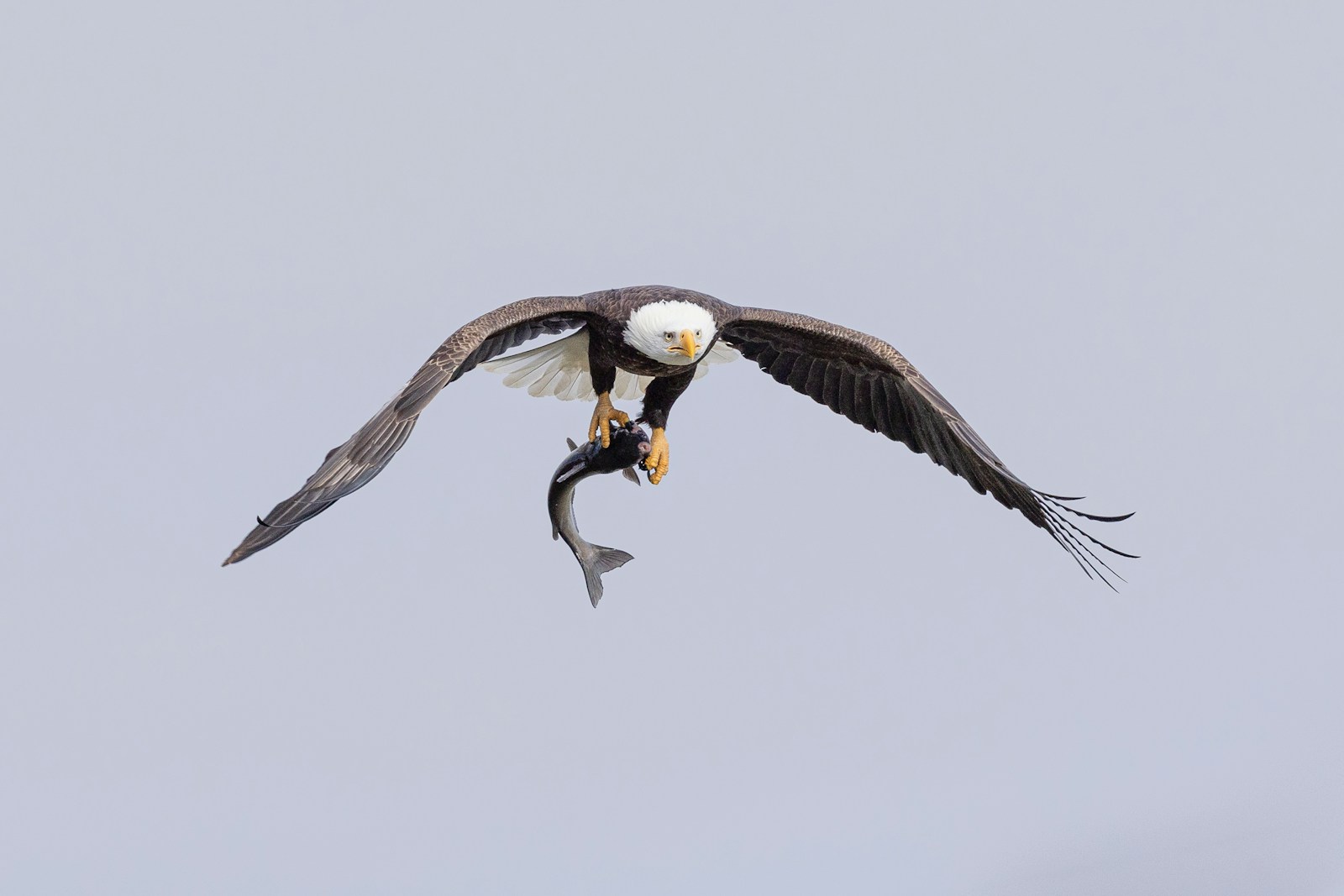The bald eagle, America’s national bird and a symbol of freedom and strength, is not only remarkable for its impressive appearance but also for its extraordinary courtship behaviors. High above forests and waterways, these majestic raptors engage in some of nature’s most spectacular aerial displays during their mating season. Their elaborate rituals involve breathtaking flight maneuvers, precise coordination, and symbolic gestures that strengthen their lifelong bonds. These courtship performances serve multiple evolutionary purposes while showcasing the eagles’ power, agility, and commitment to their partners. This article explores the fascinating world of bald eagle mating rituals, delving into the remarkable aerial acrobatics that have captivated bird enthusiasts and casual observers alike for generations.
The Significance of Aerial Courtship
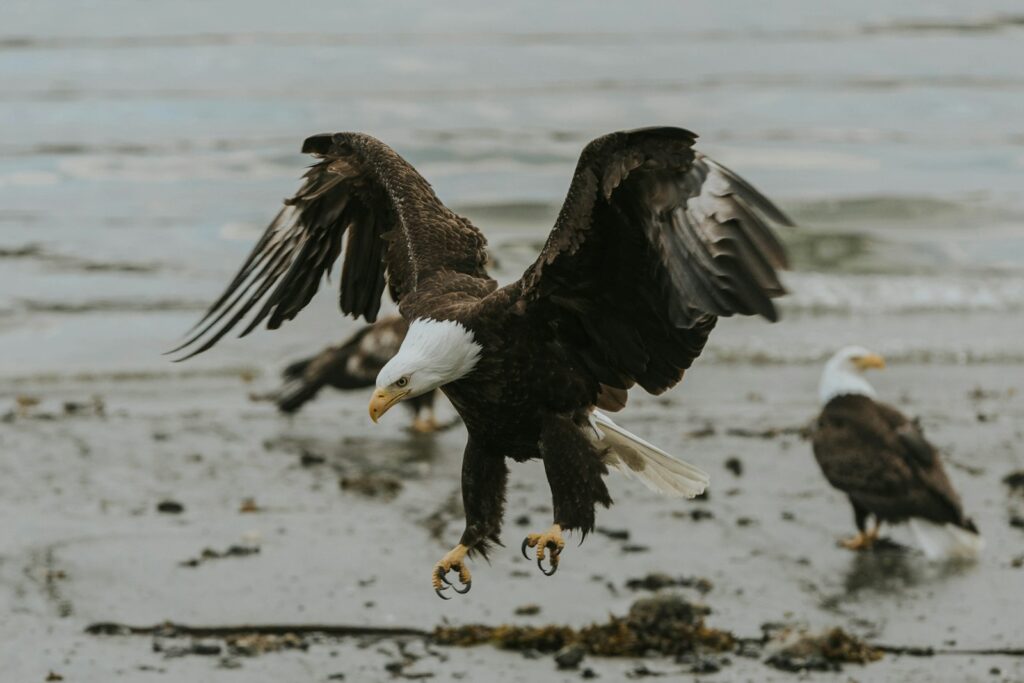
Bald eagles engage in elaborate aerial courtship displays that serve multiple critical purposes in their reproductive cycle. These high-flying performances allow potential mates to demonstrate their physical fitness, genetic quality, and capability as future parents. The complex flight patterns require exceptional strength, coordination, and flying skills—all attributes that signal a bird’s overall health and ability to successfully raise offspring. Additionally, these shared rituals help to strengthen the pair bond between eagles, building the trust and coordination necessary for the challenging tasks of nest-building, egg incubation, and chick-rearing that lie ahead. For a species that typically mates for life, these initial courtship flights establish the foundation for a reproductive partnership that may last 20-30 years.
Timing of Mating Season
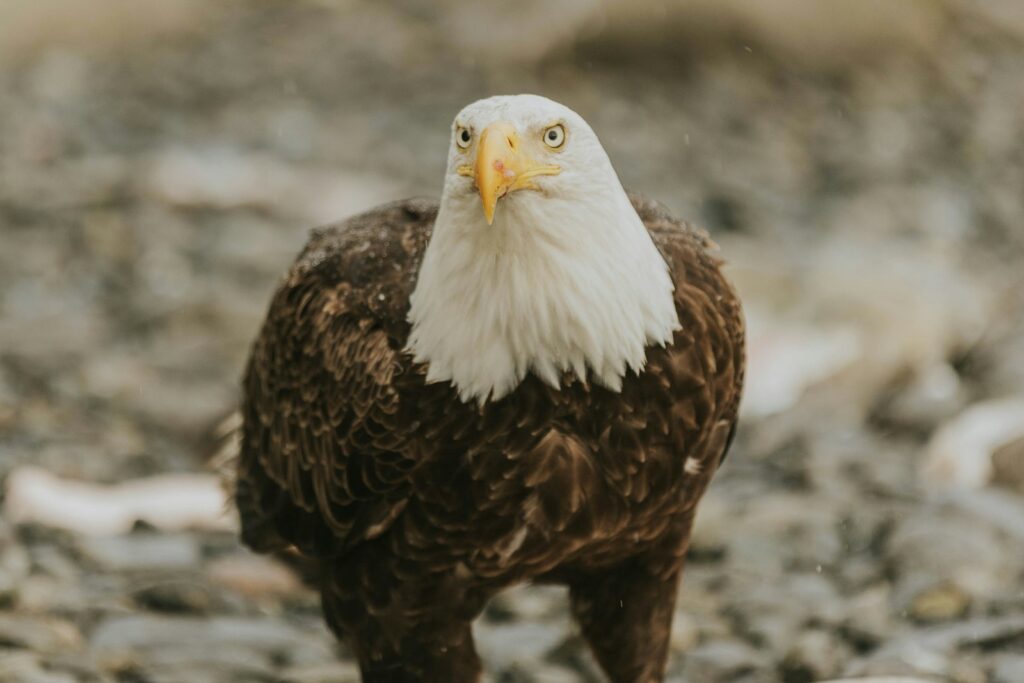
Bald eagles typically begin their courtship behaviors during late winter to early spring, with the exact timing varying by geographic location. In southern regions such as Florida, courtship may begin as early as September or October, while eagles in Alaska and northern territories often start in March or April as daylight hours increase and temperatures rise. This strategic timing ensures that young eagles will hatch when food sources are abundant, maximizing their chances of survival through their vulnerable early months. Environmental factors such as local climate patterns, food availability, and the age of the eagles themselves can all influence when the dramatic aerial courtship displays commence. Researchers have noted that established pairs may engage in courtship behaviors over a longer period, while new pairs typically spend more time performing elaborate displays to cement their bond.
The Cartwheel Display – Nature’s Free Fall
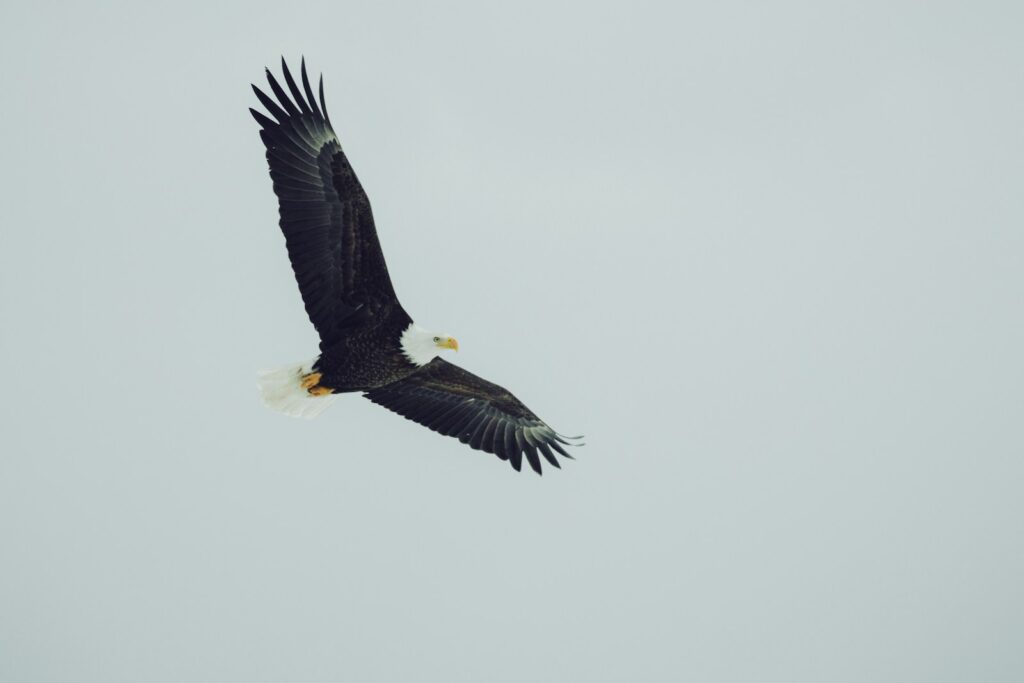
The most dramatic and recognized bald eagle courtship ritual is undoubtedly the cartwheel display, a breathtaking aerial maneuver that showcases both skill and trust between potential mates. This spectacular performance begins high in the sky, where a pair of eagles will fly up to remarkable heights, sometimes exceeding 3,000 feet above the ground. Once at altitude, the eagles lock talons in midair—literally grasping each other’s feet—and begin a controlled free fall toward earth, spinning rapidly in a cartwheel-like motion. During this plummeting spiral, they can reach speeds approaching 100 miles per hour, rotating as they descend in perfect synchronization. The eagles maintain this connected position until the last possible moment, when they separate and pull up to avoid collision with the ground, demonstrating exceptional timing and mutual coordination. This high-risk behavior not only tests each bird’s flying abilities but represents a profound display of trust between potential life partners.
The Chase Flight Pattern
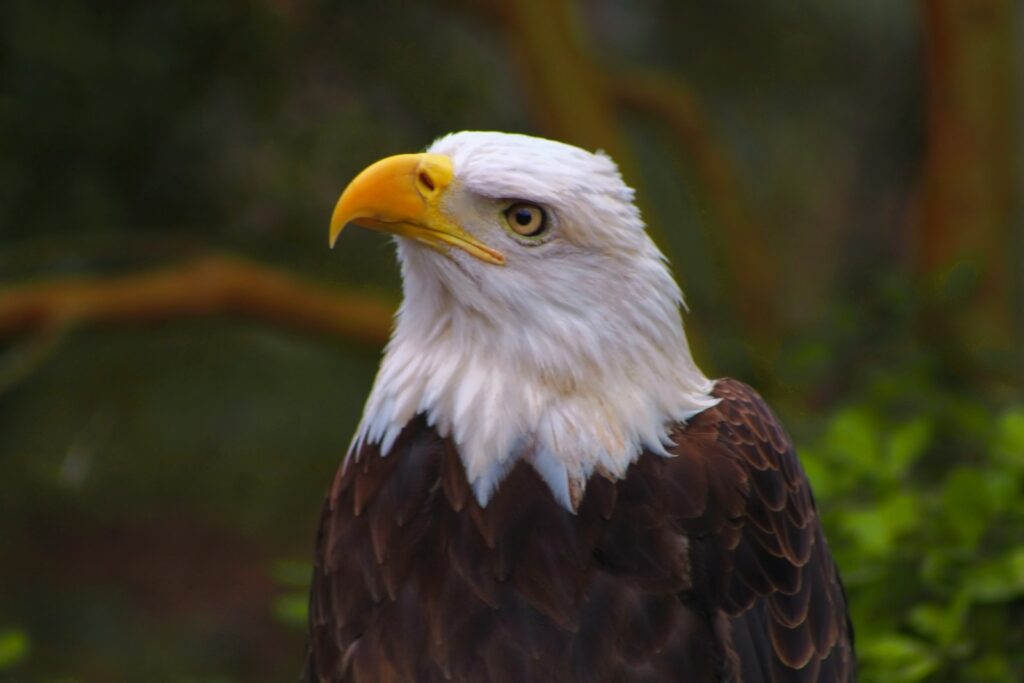
The chase flight represents another important component of bald eagle courtship behaviors, combining elements of pursuit, display, and pair bonding. During these sequences, one eagle (typically the male) pursues the other in rapid, undulating flight patterns that showcase aerial agility and stamina. The lead eagle performs a series of dives, climbs, rolls, and turns while the pursuing partner attempts to mirror these movements precisely, demonstrating their compatibility and coordination. These chases can extend for several minutes and cover significant distances as the birds weave through the sky in a synchronized aerial dance. Observers often note that the pursuing eagle will fly slightly above the lead bird, creating opportunities for brief touchpoints where their wings or talons may momentarily connect. The chase serves multiple purposes—it strengthens the eagles’ bond through shared experience, allows assessment of each other’s flying capabilities, and often serves as a precursor to more intimate courtship behaviors.
Synchronized Soaring Techniques
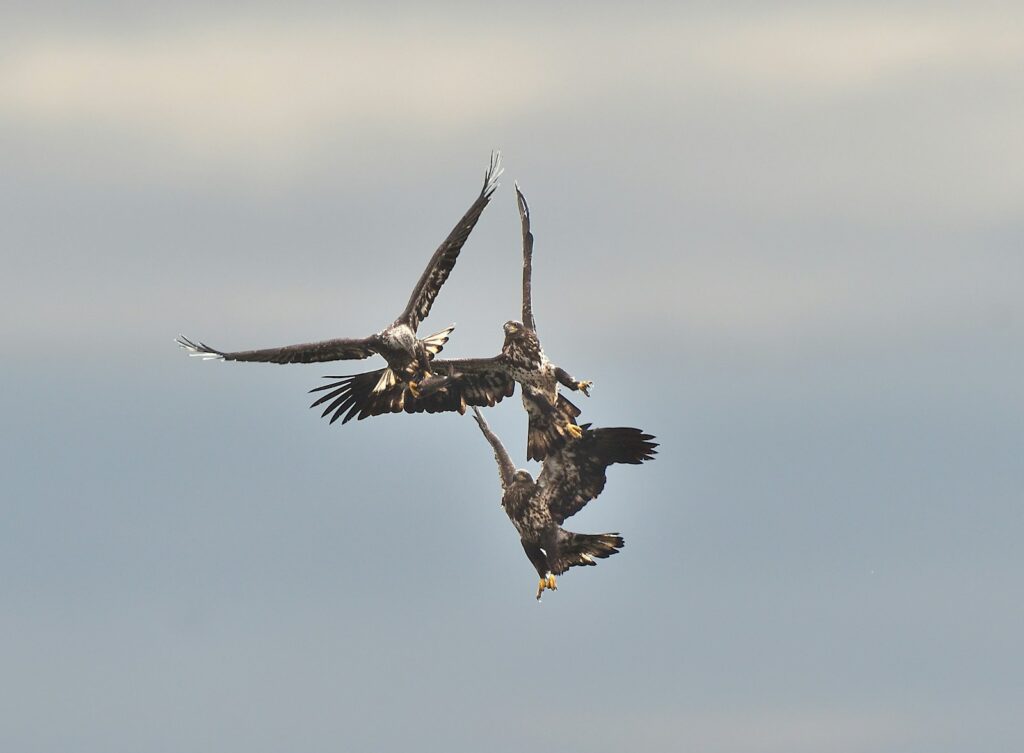
Bald eagles engage in remarkable synchronized soaring during courtship, where pairs fly in perfect harmony while barely flapping their wings. Using thermal air currents and updrafts, the eagles position themselves in parallel flight paths, maintaining consistent spacing and altitude while making minute adjustments to their primary and tail feathers for precise control. These coordinated flights may include mirrored banking turns where both birds tilt at identical angles, creating a striking visual display of unity and coordination. The eagles often alternate leadership roles during these soaring sessions, with each bird taking turns initiating directional changes that the partner then follows. Synchronized soaring serves as a less physically demanding but equally important courtship behavior that demonstrates the pair’s ability to work together—a critical skill for successful nesting and chick-rearing. Biologists have observed that more experienced pairs exhibit notably more refined synchronization in these flights, indicating the behavior’s importance to long-term bonding.
The Power Dive Demonstration
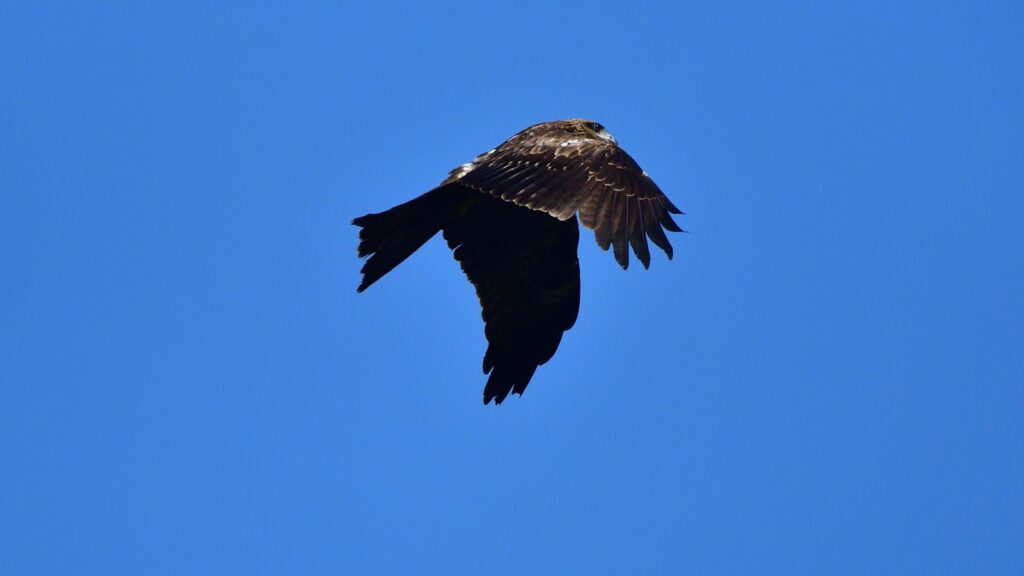
The power dive represents one of the most impressive solo displays in the bald eagle’s courtship repertoire, showcasing individual strength and flying precision. During this maneuver, an eagle (most commonly the male) ascends to a significant height before tucking its wings close to its body and diving at tremendous speed—sometimes exceeding 100 mph—toward its watching partner or a potential nesting area. The diving eagle pulls up at the last moment with dramatic precision, sometimes skimming just feet above the water or ground before soaring upward again in a powerful display of control. These dives are often accompanied by vocalizations, with the diving bird emitting distinctive calls that enhance the theatrical nature of the performance. The power dive serves multiple purposes in courtship: it demonstrates the eagle’s hunting prowess, physical condition, and aerial capability—all attributes that signal genetic fitness to a potential mate. Researchers have noted that males with particularly impressive diving displays often pair with females more quickly than those with less dynamic performances.
Talon Grappling – Tests of Strength
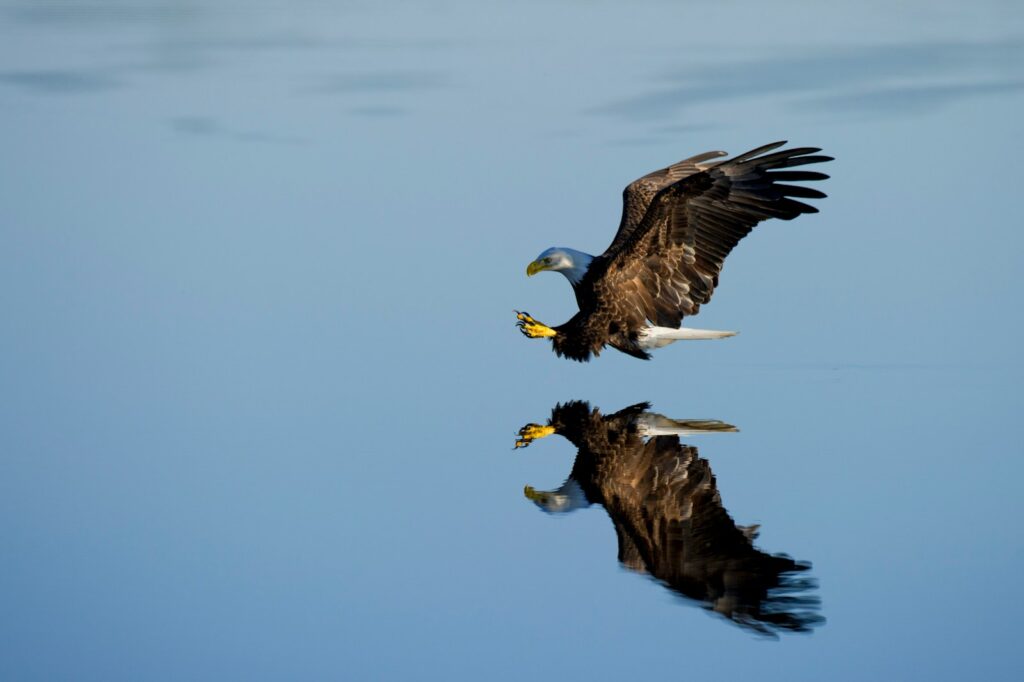
Talon grappling represents one of the more aggressive yet fascinating aspects of bald eagle courtship, serving as both a strength assessment and bonding ritual. During this behavior, eagles fly toward each other and extend their powerful talons forward, momentarily grasping each other’s feet in midair while maintaining flight. Unlike the cartwheel display where the birds lock together and fall, talon grappling involves brief contact followed by immediate separation as the eagles continue flying. These interactions can range from gentle, almost playful touches to more forceful grasps that demonstrate physical power and dominance. The ritual allows both birds to assess each other’s strength—a critical factor in determining a partner’s ability to defend territory and provide for future offspring. Experienced observers have documented that these grappling sessions typically increase in frequency as the pair bond strengthens, often occurring multiple times daily in the weeks leading up to nest construction and mating.
Vocalizations During Aerial Courtship
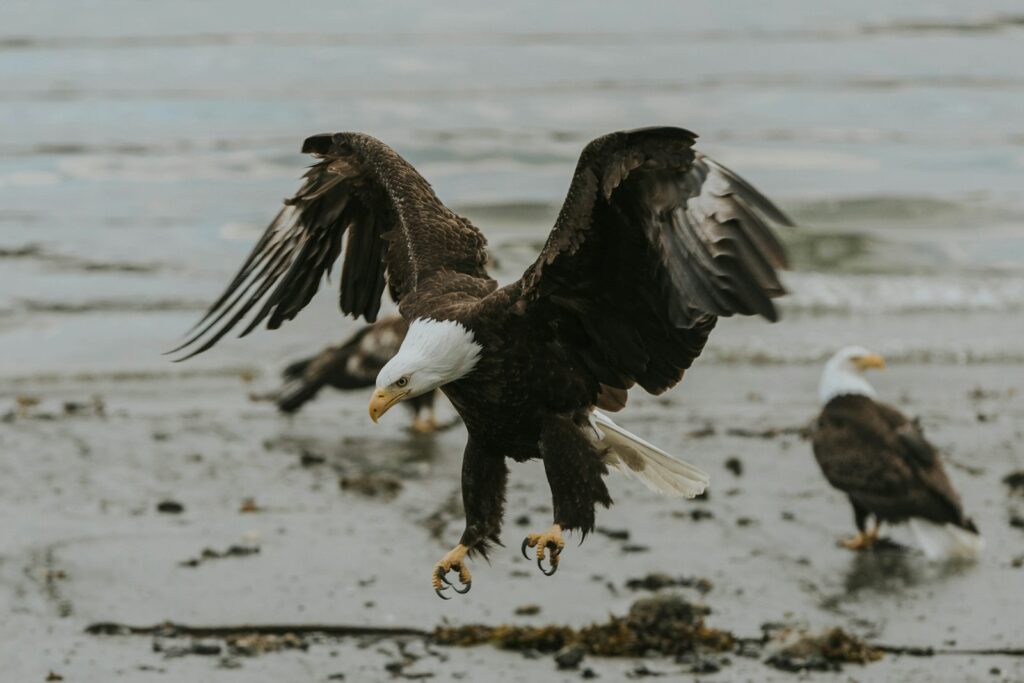
Bald eagles employ a distinctive range of vocalizations during their aerial courtship displays, adding an auditory dimension to their visual performances. Despite their fierce appearance, these massive birds produce surprisingly high-pitched calls, with mated pairs often engaging in coordinated duets during flight. The most common courtship call is a series of high, clear notes described as “kee-kee-kee” that accelerate and increase in pitch during particularly intense aerial maneuvers. Males typically have slightly higher-pitched vocalizations than females, allowing partners to identify each other even at great distances during complex flight patterns. These calls serve multiple functions, including coordination during synchronized flying, territory announcement to potential competitors, and strengthening the pair bond through vocal recognition. Researchers have documented that each mated pair develops unique vocal patterns and responses that function almost like a private language, reinforcing their exclusive relationship and helping maintain contact during expansive flight displays.
From Courtship to Nesting Behaviors
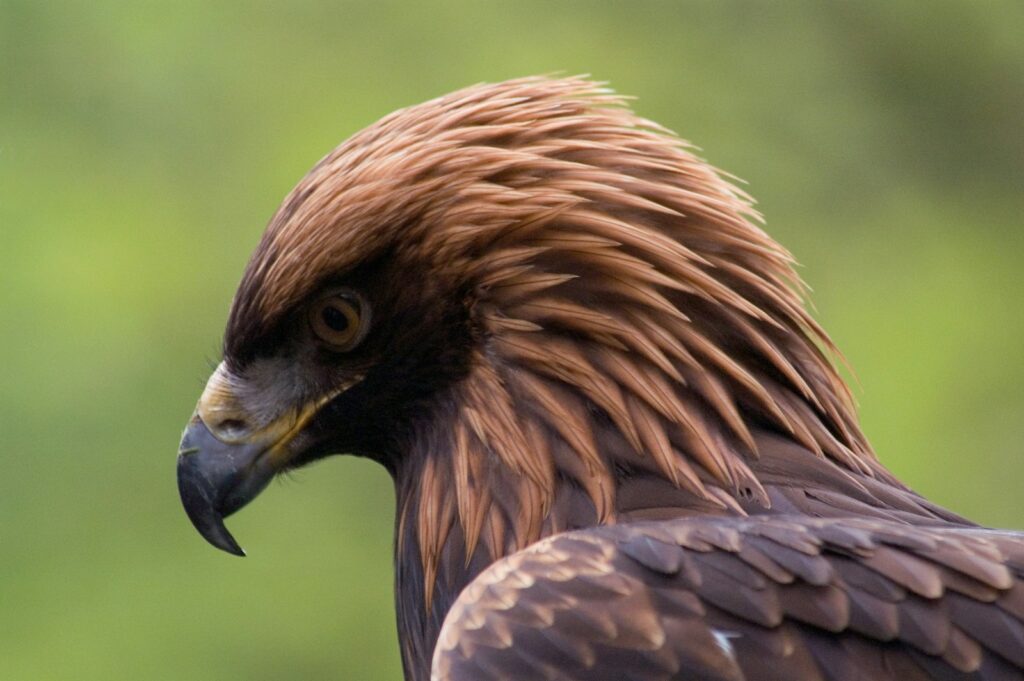
The transition from aerial courtship to nesting behaviors follows a predictable progression as the mating season advances. As courtship flights reach their peak intensity, eagles begin incorporating nest-building materials into their rituals, with one bird sometimes passing sticks or nesting material to its partner mid-flight in spectacular displays of coordination. These material transfers gradually shift to more grounded activities as the pair selects a nesting site, typically in a tall tree with commanding views of surrounding territory. The eagles then work together to construct or refurbish their massive nest, with males generally gathering materials while females handle the precise architectural arrangements. This collaborative nest-building phase represents a critical extension of the courtship process, continuing to strengthen the pair bond while creating the physical foundation for reproduction. For established pairs with existing nests, this period involves adding new materials to nests that grow larger each year, with some documented eagle nests reaching weights exceeding two tons after decades of continuous use.
The Role of Territory in Courtship
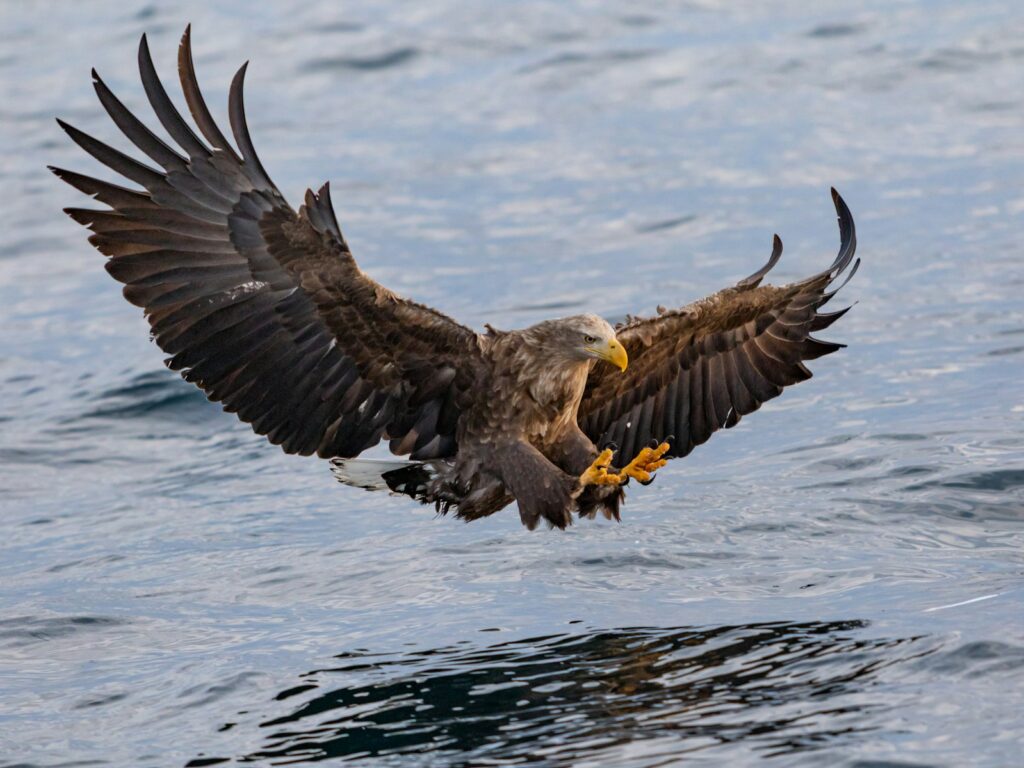
Territory plays a fundamental role in bald eagle courtship, with aerial displays frequently occurring over areas the pair intends to claim or defend for nesting. Eagles strategically perform their most dramatic courtship flights at the boundaries of their chosen territory, effectively advertising their presence and pair bond to potential competitors. These territorial displays often intensify when intruding eagles approach, with the mated pair executing synchronized flight patterns that demonstrate their unified defense capabilities. The quality of the territory itself—including factors like food availability, suitable nesting trees, and limited human disturbance—can influence the intensity and duration of courtship behaviors, as prime locations inspire more vigorous defense and bonding rituals. Researchers have documented that eagles with particularly desirable territories engage in more frequent and elaborate courtship displays, reinforcing their claim to valuable resources while simultaneously strengthening their partnership. This territorial component adds an important ecological dimension to what might otherwise be viewed as purely reproductive behavior.
Differences Between Established and New Pairs
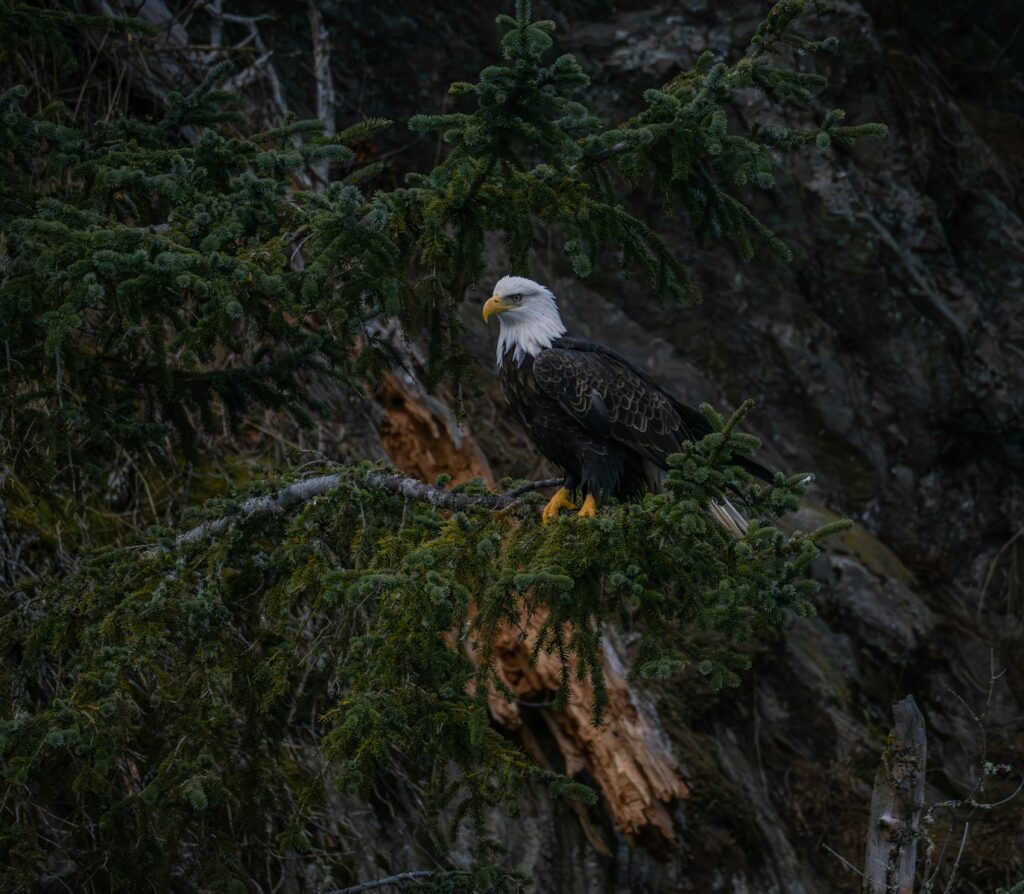
Bald eagles demonstrate fascinating behavioral variations in courtship depending on whether they are newly formed or established pairs. Eagles that have been together for multiple seasons typically engage in shorter, more efficient courtship rituals that serve primarily to reinforce their existing bond rather than establish compatibility. These experienced pairs often incorporate abbreviated versions of the classic displays—performing fewer cartwheels or shorter chase sequences—while spending more time on practical nest preparation and territory defense. In contrast, newly formed pairs invest significantly more time and energy in elaborate courtship flights, sometimes performing dramatic aerial displays for several weeks before proceeding to nest-building activities. First-time partners require these extended courtship periods to establish trust, assess compatibility, and develop the coordination necessary for successful reproduction. Researchers have observed that young, inexperienced eagles typically perform courtship maneuvers with less precision than older birds, sometimes resulting in awkward moments during complex flight patterns that improve with practice and partnership longevity.
The Culmination: Actual Mating
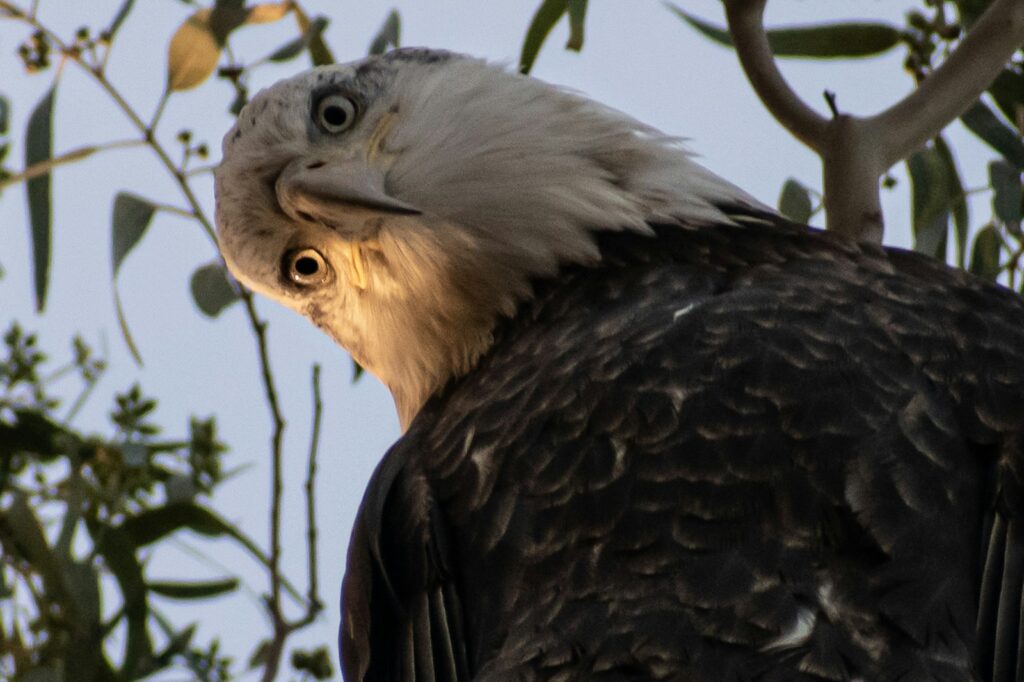
The culmination of bald eagle courtship rituals is the actual mating act, which typically occurs on a branch near the nest site rather than during flight. After weeks of aerial displays and bonding behaviors, the female indicates receptiveness through specific postures and vocalizations, typically perching with her body in a horizontal position and emitting soft calls to her partner. The male responds by landing carefully on her back, balancing with partially extended wings while they briefly join their cloacas—the single reproductive opening in birds—in a process that generally lasts less than 10 seconds but may be repeated multiple times daily during peak fertility. Despite its brevity, this mating behavior represents the essential purpose of the elaborate aerial courtship that preceded it. Eagles typically mate multiple times over several days to ensure successful fertilization, with the frequency of copulation increasing just before egg-laying. Following successful mating, the female typically lays 1-3 eggs over several days, beginning the next phase of their reproductive cycle.
Conservation Implications of Understanding Courtship
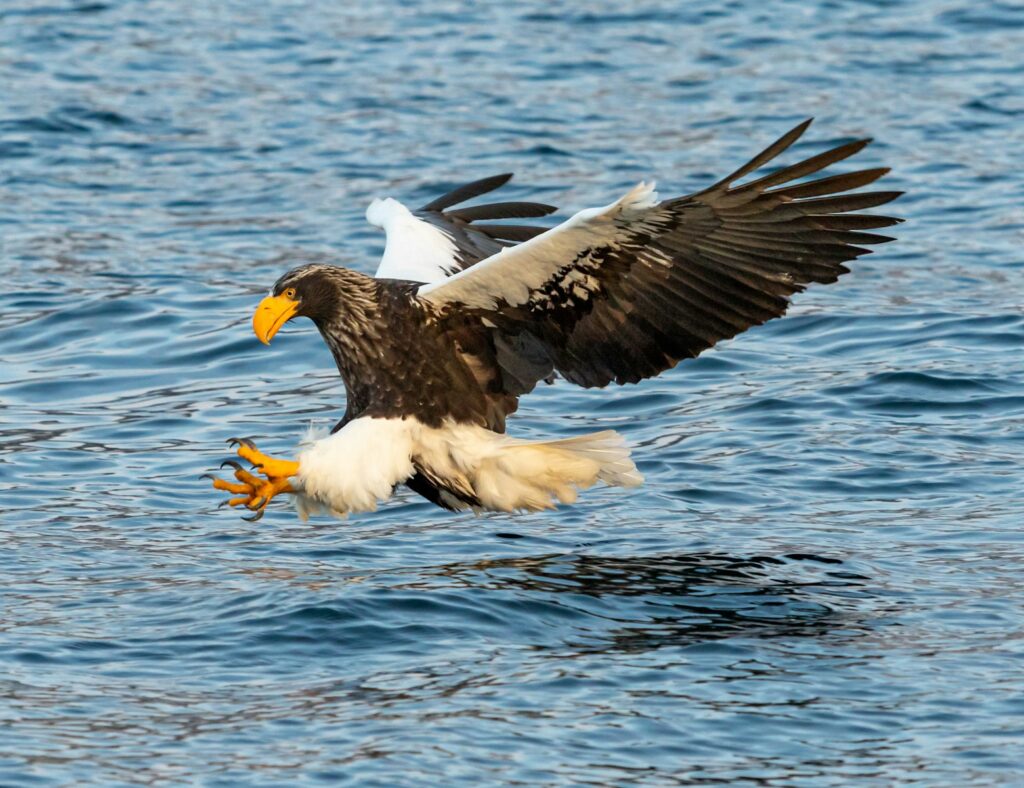
Scientific understanding of bald eagle courtship behaviors has significant implications for conservation efforts aimed at protecting this iconic species. By identifying the specific conditions and habitats required for successful courtship displays, conservationists can better prioritize the protection of areas that support these critical behaviors. Research has demonstrated that eagles require not only suitable nesting trees but also adequate open airspace free from obstacles like power lines and wind turbines to perform their complex aerial maneuvers safely. Human disturbance during the sensitive courtship period can disrupt these rituals and potentially impact reproductive success, informing policies about restricted access to known courtship areas during mating season. Additionally, the elaborate nature of these courtship displays serves as an important indicator of ecosystem health, as only eagles with access to abundant food resources and suitable habitat can invest the considerable energy required for extended aerial performances. By monitoring changes in courtship behavior patterns over time, researchers gain valuable insights into the effects of environmental stressors on eagle populations, creating a biological early warning system for conservation concerns.
Conclusion

Bald eagles demonstrate some of nature’s most spectacular courtship behaviors, combining raw power, precise coordination, and lifelong dedication in their aerial mating rituals. These magnificent birds transform the sky into a theater of natural selection, where elaborate flight displays serve multiple evolutionary purposes—from assessing genetic fitness to strengthening the bonds that will sustain them through decades of partnership. For those fortunate enough to witness these performances, bald eagle courtship provides not just a wildlife spectacle but a powerful reminder of the complex social behaviors that exist throughout the animal kingdom. As conservation efforts continue to support bald eagle recovery across North America, future generations will have increasing opportunities to marvel at these extraordinary aerial acrobatics—a living embodiment of both natural grace and the success of wildlife protection efforts.

